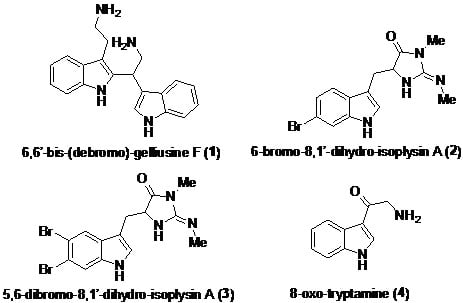TASCMAR (Closed)
A project collection of Marine Drugs (ISSN 1660-3397).
Papers displayed on this page all arise from the same project. Editorial decisions were made independently of project staff and handled by the Editor-in-Chief or qualified Editorial Board members.
Viewed by 9713Editors
Interests: molecular-cellular ageing; age-related diseases; carcinogenesis
Special Issues, Collections and Topics in MDPI journals
Project Overview
Dear Colleagues,
TASCMAR (Tools And Strategies to access original bioactive compounds by Cultivating MARine invertebrates and associated symbionts) is a European Commission funded project aspiring to develop new tools and strategies to overcome existing bottlenecks in the discovery and industrial exploitation of marine-derived biomolecules (secondary metabolites and enzymes) with applications in the pharmaceutical, nutraceutical and cosmeceutical industries. Exploitation of neglected and underutilized marine invertebrates and symbionts from the mesophotic zone will be combined with innovative approaches for the cultivation and extraction of marine organisms, from lab to pilot-scale, including the construction of new biotechnological equipment. This approach will ensure the sustainable supply of biomass while promoting the production of high added value bioactive marine compounds. State-of-the-art analytical instrumentation and in-house databases will be employed for the dereplication and characterisation of valuable compounds and a focused panel of in vitro, cell-based, in ovo and in vivo bioassays, for discovering metabolites with anti-ageing and/or angiogenesis modulating activity, will guide the project’s workflow to reveal the lead compounds. In addition, the catalytic potential of mesophotic symbionts and deriving enzyme candidates will be evaluated in the fine chemicals and bioremediation industries. TASCMAR will be continuously evaluated for its socioeconomic and environmental impact in order to balance industrial development and sustainable growth. The project also aims to develop higher standards for bioprospecting in areas of rich marine biodiversity.
Dr. Anne Bialecki
Dr. Jamal Ouazzani
Dr. Ioannis Trougakos
Project Leaders
Keywords
- mesophotic coral ecosystems (MCEs)
- age-related diseases
- marine invertebrate holobionts
- marine micobial symbionts
- marine secondary metabolites
- marine-derived biocatalysts









